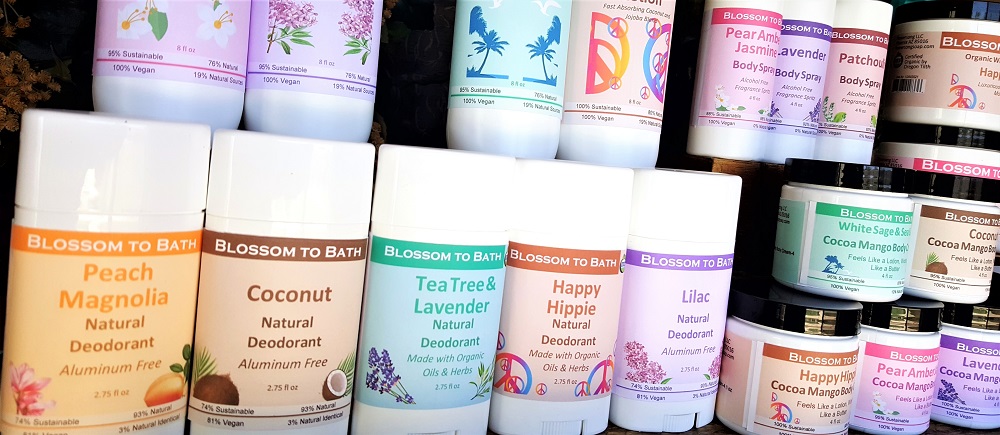This post is part of a series exploring the story of some of the hottest debates in personal care products today – the use of preservatives, petroleum products, synthetics, sulfates, and fragrances.
Everyone wants to spend their money wisely, be as healthy as possible, and feel good about making a positive impact through the products they choose for themselves and their family.

When evaluating which products to choose, the factors to consider are overwhelming. It is a mini-career to keep up with the sheer number of things that are “good” and “bad” for you. The trends in vilifying or praising ingredients change weekly. Trying to figure out exactly what all that stuff on a product label is seems like it requires a degree in chemistry.
In the past we learned not to rely on manufacturers to provide accurate and complete details about what goes into their products and how they are made. Today, we face information overload, we have gone from having dubious facts to being mired in details.
How does a concerned consumer make smart choices in this environment?

The usual response is that “knowledge is power”. But knowledge is only one part of making smart choices. Having a basis for discerning the right personal choice is also required. We must form our own opinion and judgments about the products we choose based on our priorities, risk tolerance, budgets, and values.
Advertisers would like us to adopt their opinions about what is right for us. Champions of particular issues would like us to adopt their opinions. Online influencers make a living adding their opinions to the mix. All this opinion sharing adds a layer of even MORE information to learn and interpret.
Natural becomes mainstream
Regardless of the challenges, more and more consumers are choosing to demand natural products. This trend is important for everyone, as we will see in a moment.
Manufacturers are responding to this demand, and large corporations are introducing variations of their products with reduced chemicals and less processed ingredients.

As large companies begin to populate shelves with products that claim to be more natural, the confusing volume of information and opinions grows. We are bombarded with a new wave of marketing messages and trendy issues.
The advertising machine is hard at work trying to get us excited about specific features and ingredients. For example, there is a TV commercial that talks about “oil infused lotion,” which might seem like a really cool development. However, upon learning that the definition of lotion is oil infused in water, and every lotion and cream on earth is “oil infused,” one may be given pause to wonder that such a statement is actually being used as if it were a unique feature. Do we really understand what we are being sold?

It is a positive direction that awareness of natural products is expanding. It is important that companies are motivated to continue this trend for the right reasons. Responsible advertising must support the original intent of good health, clean products, and preservation of the planet. If we are not careful, the term “natural” could be fast on its way to becoming a trendy buzzword.
The Power of Choice
In our consumer society, we vote for the products we want to remain available with our dollars. Over time, what we buy determines what will be offered. This is the power of choice. We are tasked with making the best choices possible to ensure the health and well being of humans and the planet in the long run.
The good new is, if you understand the “story” of shampoo and its ingredients, you will be able to read the label and make an informed choice quickly. If you have access to online content while at the store, you will be able to evaluate at a glance the brand message from the manufacturer in the context of responsible advertising. Knowing a bit about history can help you make the future better.
The Start of Natural Products
The natural products movement began as a response to the introduction of synthetic pesticides in 1920s Germany. The US experienced a similar effect when synthetic pesticides were introduced in the 1940s. Through the 50s, 60s, and 70s, efforts to raise awareness about harmful farming practices and ingredients continued. Notably, in the 1960s, key research documenting the negative effects of certain chemicals was published, fueling a growth in awareness of the long term effects of some substances.

Throughout the 1970s and 1980s, several of the brand names we recognize today as leaders in the natural products movement were started, such as Tom’s of Maine and Whole Foods. The USDA created the National Organics Program in the 1980s, and at the start of the 21st century, Certified Organic farming and processing was in high growth mode.
As we approach 20 years of the growth of natural products in the mainstream, the industry is still in its infancy, representing about 8% of total sales of consumer packaged goods. The good news is that there is a continual expansion, and this small sector is driving disproportionate growth as major players are joining the trend.
What Natural Means
Despite a hundred years of natural commercial products, there are still wide variations in what exactly it means for a product to be “natural.” The USDA provides for the classification and grading of agricultural products specific to each type of crop, but no generic qualifications for natural farming exist. While there are standards in the US that dictate what kind of medicine and feed can be given to livestock, natural farming remains a philosophy.
The establishment of the USDA Organic program has given some structure to the definition of natural products by making products that are on the purest end of the spectrum instantly recognizable. Worldwide, there are several Organic standards, but in some places, organic is not a standard at all but simply an adjective.

Natural Products are Important for Everyone
Among the natural and organic product industry members, there is a long-suffering faction of people who, for decades, have been hopping up and down about the safety of cosmetic and food ingredients. These voices encourage us to look at the elemental, to consider the sources, and to understand where it all comes from. They ask that humans maintain a mutually beneficial relationship with nature for our own good.

For most of us, the source of the food and products we consume is not given a daily thought. We are all specialized, going to work daily and doing a single job. We don’t need to grow and pick our vegetables daily (unless we want to). Others grow our food and make the products that we need in return for the capital that allows the cycle of production to continue.
There is nothing wrong with this arrangement. The human race advances because some people are able to concentrate on building on past successes, developing technology, and leading us to the next phase of our evolution. But due to this division of labor, it is easy to lose touch with the source of energy and nourishment that goes into the products we buy, and we must guard against forgetting to protect our resources in the name of convenience.
The Natural Products industry is a way to stay connected to the source of goodness that supports us. We as consumers are the source of the demand being placed on the natural world. It is crucial to understand what is being done by farmers, manufacturers, and retailers in order to satisfy the demands of the specialized population. Especially in the Western world, the system is set up to reward those who meet demand. It is our responsibility to understand what we are asking for.
My Journey – Blossom to Bath
My mission is to develop products that are affordable for daily use but overwhelmingly natural in content. The process included learning a new vocabulary, wading through technical research papers, and experimenting with old and new ingredients and methods of production. I have found that I could spend another 5 lifetimes on this effort.

In 2017 my company introduced a line of Certified Organic Body Care products. A giant focus has been on researching ingredients, dealing with product testing and consumer safety factors, and making decisions about what to include and what to leave out of natural product formulas.
It was only when I began to understand the history of these products and the effects of the revolutionary developments in science in the last 150 years that the path became clear.
Taking a Historical Perspective
Investigating the stories of products we use every day can help to create a road map for navigating the hype and mountains of detail. Understanding the background behind the messages and claims we are bombarded with helps us to make wiser choices.
The goal of taking a historical perspective is to tell a story about the products we see on the shelf every day, to make the details and history of these products and ingredients easy to remember and evaluate.
This series of articles is intended to provide a tool for use by others who would further their understanding of natural Body Care products.


